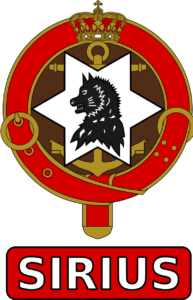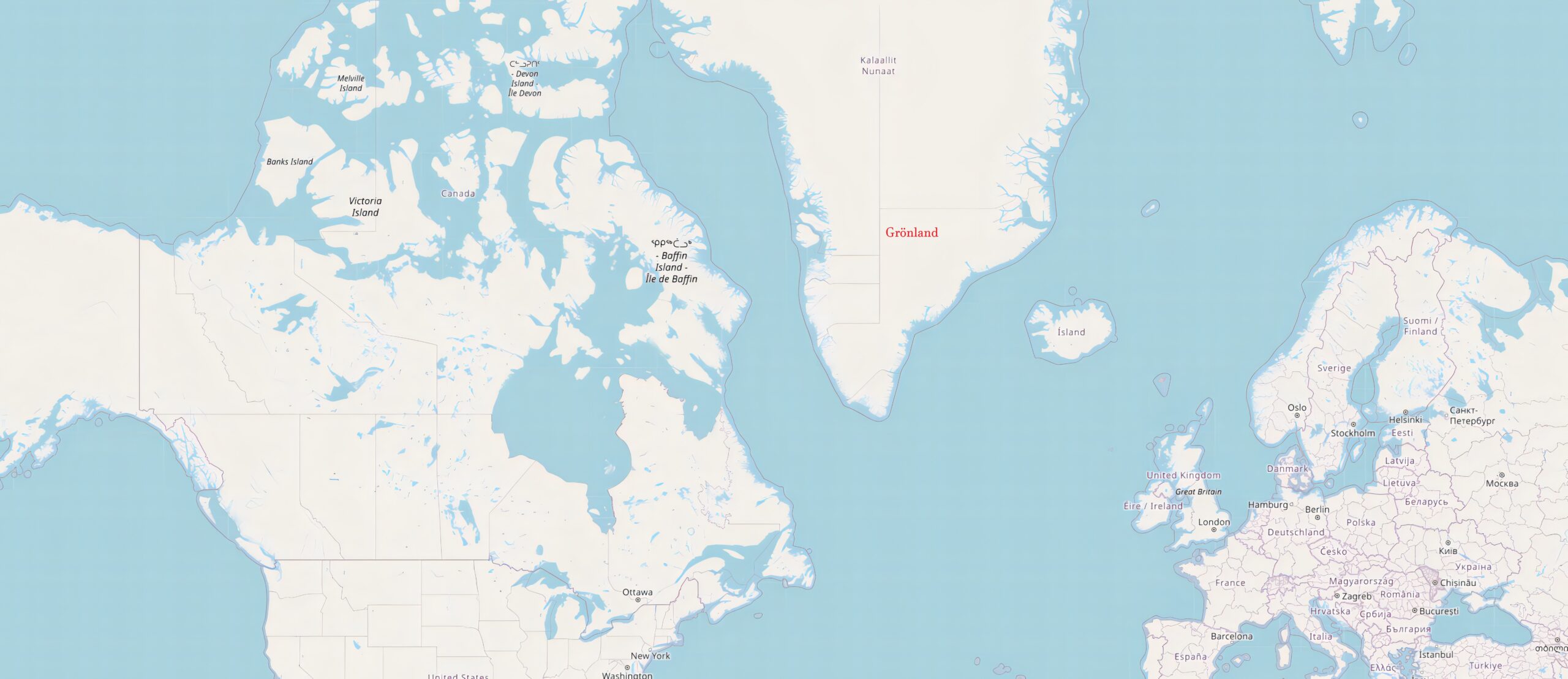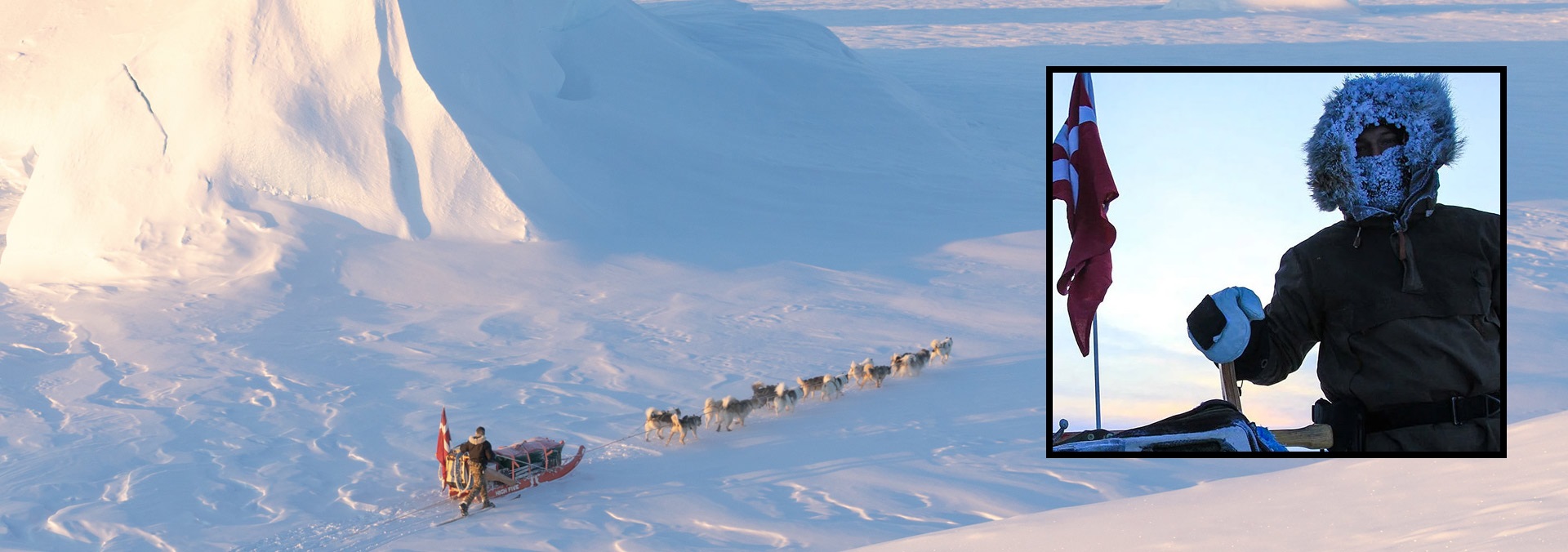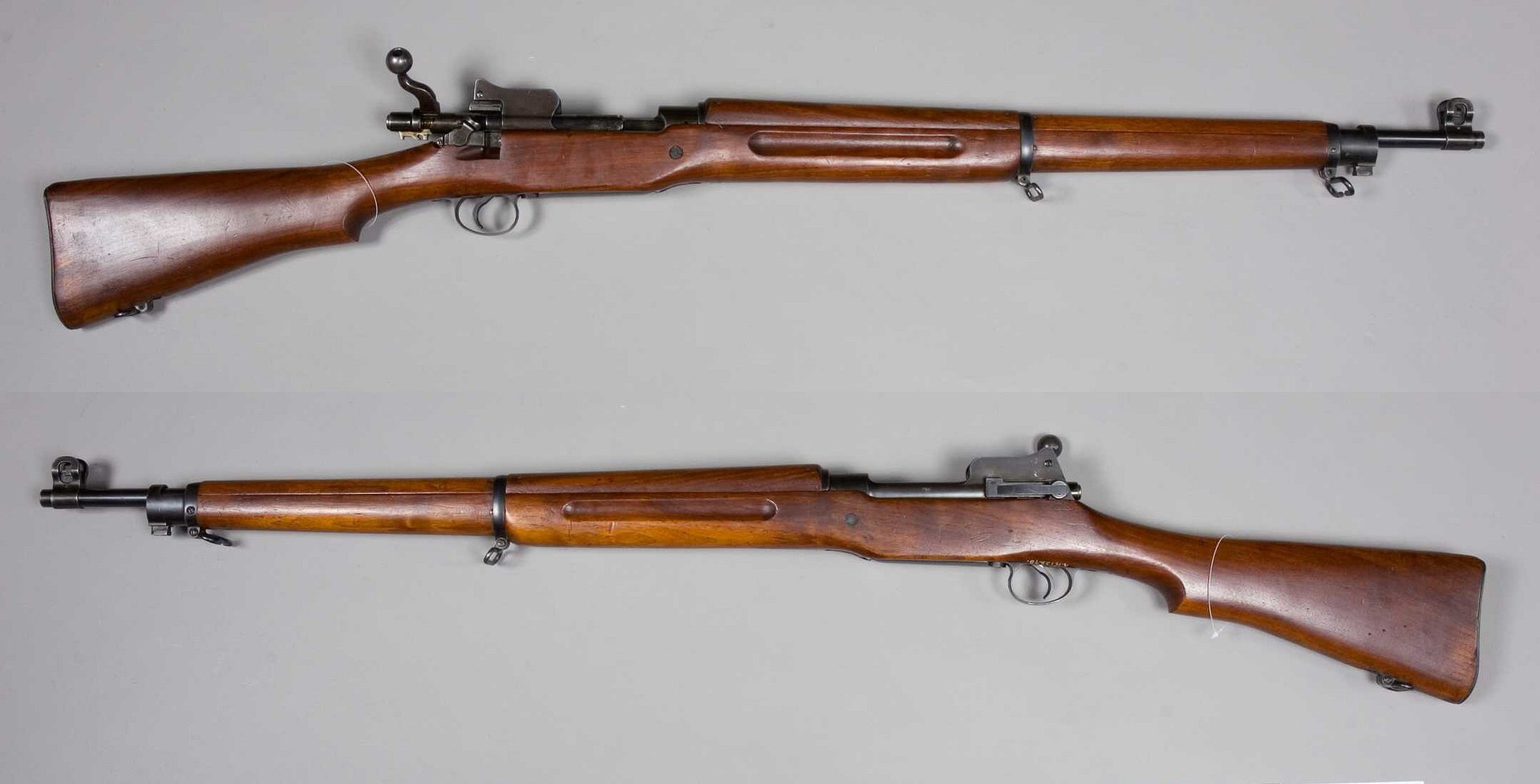For centuries, nations in the northern hemisphere have had their eyes on the Arctic. In some cases due to scientific interest, in others commercial, while others have been the searching for new colonies and new resources. As the climate has changed over the past decades, opening up previously inaccessible Arctic areas to shipping, this interest has increased and expanded, from the ‘usual suspects’ – the Nordic countries, UK, Canada, USA and Russia, to include new players such as China and India. This has, of course, encouraged the nations with traditional interests in the region to keep a close eye on things, which brings us to the subject of this article: One of the least known and most elite special operations units in the Arctic and the world – Sirius.

Credit: Sirius Patrol, via Wikimedia Commons
The crown at the top of the badge is the royal crown of Denmark, the star in the centre is the star Sirius, from which the patrol takes its name, and the black dog’s head is, of course, a sled dog. The anchor in the background references the fact that Sirius was originally a Navy unit, and the red circular border symbolizes a dog collar.
History
The island of Greenland, nestled across the arctic circle in the North Atlantic, is the world’s largest non-continental island. Its name brings to mind images of vast, snow- and ice-covered wastes, polar bears, icebergs and Inuit trappers. The island’s area of roughly 2.166 million km2 makes it slightly larger than the combined areas of Austria, Belgium, Denmark, France, Germany, Ireland, Italy, Poland, Portugal, the Netherlands and the United Kingdom, and with almost the entire permanent population of around 56,600 concentrated in the island’s coastal areas, Greenland has an average population density of 0,028 people per km2, or roughly 1 person per 35km2.
The first ‘outsider’ to successfully establish a permanent presence in Greenland, around the year 982 CE, was the Icelandic Viking, Erik Thorvaldsson, AKA Erik The Red, (c. 950 – c. 1003 CE). Having been found guilty of murder, and exiled from Iceland, Erik set sail for a little-known land said to exist to the northwest. Having found the island in question, Erik established a colony on a mostly ice-free part of the West coast, and, after the end of his exile, he returned to Iceland, bringing with him stories of the wonderful new land he had discovered. He called it ‘Greenland’, in the belief that the name would attract further settlers.

Credit: OpenStreetMap
In 1776 the Kingdom of Denmark-Norway assumed full monopoly of trade with Greenland, and the Greenland coast was closed to foreign access. Norway lost its part in the sovereignty over Greenland in 1814, when the Danish-Norwegian union was dissolved, and Greenland became an integrated part of the Kingdom of Denmark.
Norway, and other nations, were not happy about the Danish claims of monopoly over the territory. In 1924, an agreement between Denmark and Norway gave Norwegians the right to hunt, fish and establish semi-permanent settlements in unoccupied parts of Greenland. Using this agreement as a ‘springboard’, in a challenge to the Danish monopoly, Norway claimed ‘Erik the Red’s Land’ (a coastal part of North Eastern Greenland) in June 1931, and began establishing a settlement there. Denmark opposed this, and the two countries agreed to settle their dispute over the area at the Permanent Court of International Justice under the League of Nations in 1933. The Court ruled in Denmark’s favour, and following after their ruling, Norway abandoned its claim on the disputed area. However, part of the ruling was also that, for ‘Erik the Red’s Land’ to remain Danish, Denmark must be capable of asserting sovereignty there. Initially (1933-1941), this was done through the establishment of two fixed police stations in the area.
Then came World War 2 (WW2), where Denmark was invaded by Germany on 9 April 1940. As Denmark was occupied, Greenland became isolated and, having no armed forces of their own and fearing an invasion, the Greenland authorities requested and received assistance from the United States. In the summer of 1941, the ‘North-East Greenland Sledge Patrol’ was established, to conduct long-range reconnaissance patrols along the North-eastern coast of Greenland. During the war, Germany established several secret weather stations on the Eastern coast of Greenland, to provide meteorological information both to assist their U-boat campaign in the North Atlantic and to better predict the weather in the European theatre. The North-East Greenland Sledge Patrol’s monitoring and disruption of these stations did much to deny Germany such information, with significant implications for their war effort.
Following the end of WW2, the start of the Cold War lead to a desire for increased surveillance of North and North-eastern Greenland and to the formation, initially in great secrecy, of ‘Operation Resolute’, as an outgrowth of the WW2 sledge patrol. Officially established on 18 August 1950, the name of the unit was changed to ‘Sled Patrol Resolute’ in 1951 and, in 1953, the name was again changed, this time to ‘Sled Patrol Sirius’, to avoid confusion with the Canadian Resolute Bay weather station. The name comes from the star Alpha Canis Majoris, also known as Sirius and, appropriately, also as the Dog Star, the brightest star in the night sky.
In 1953, Greenland was fully integrated into the Danish state, under the Constitution of Denmark, with home rule granted to the island on 1 May 1979. In 2008, Greenlanders voted in favour of the Self-Government Act, which transferred more power from the Danish government to the local Greenland government, including responsibility for the majority of government functions. The Danish government retained control of citizenship, monetary policy and foreign affairs, including defence. This latter is where the Sirius Dog Sled Patrol comes in.
The Sirius Patrol
The modern day Sirius Dog Sled Patrol, or ‘Sirius Patrol’ as it is informally known, is one of the Danish armed forces’ special operations units and, as such, is organized under the Danish Special Operations Command, alongside the Frogman Corps (Navy special forces) and the Jaeger Corps (Army special forces).
The unit’s primary Area of Operation (AO) is North-eastern Greenland. At 972,000 km2, the Northeast Greenland National Park is currently the world’s largest national park, and the world’s ninth-largest protected area.
The unit’s tasks include surveillance, policing and law enforcement and sovereignty assertion in the AO. Additionally, the patrol keeps an eye on cruise ships, the various scientific and sports expeditions in the area, assists in search and rescue missions, and also serves as park rangers in the Northeast Greenland National Park. A further task, that has increased in importance over the last few years, is monitoring the impacts of climate change on the Greenland environment. Although ‘dog sled’ is part of the unit name, patrolling is also conducted by boat during the summer months, where the Northeast coast of Greenland is reasonably ice-free. In the winter months, though, patrolling is done by dog sled, in two-man teams who often spend months at the time on the ice, without contact with other humans.
Joining Sirius
As it can readily be imagined, joining the Sirius Patrol is not for everyone, and this is reflected in the requirements for joining.
Anyone who has completed basic training with the Danish Armed Forces or the Danish Emergency Management Agency can apply to join the Sirius Patrol. Applicants are first subjected to a 2-module admission test. The first module, which lasts 5 days, is an initial evaluation of the candidates in terms of physical and psychological fitness, cooperative abilities and a medical check. The 12 best candidates from Module 1 are then invited to take part in Module 2, which lasts 2 days, and is a final check and confirmation of the candidates’ suitability.
In addition to the physical and psychological fitness, it is also important that the candidates have clarified the situation with their families since, if they are accepted into Sirius, they will be spending 26 months on patrol in Greenland.
Once candidates have successfully negotiated the admission test, they start the training for their service with Sirius. The training takes approximately 8 months and covers, among other things, the following areas:
Winter training/survival
Marksmanship and hunting
Demolitions and explosive ordnance disposal (EOD)
Engine operator and mechanic
Reconnaissance
Firefighting and smoke diving
Radio and communications
First aid (basic and expanded)
Meteorology
Cooking and hygiene
Sewing
Forklift operation
Welding
Speedboat piloting
The above training syllabus demonstrates well the multi-purpose nature of the Sirius Patrol – not just in terms of their mission, but also in terms of the very broad skill set required of their personnel. When on patrol, their logistical support consists almost exclusively of the face they see in the mirror in the morning, and whatever situation they face along the way, maybe short of an actual invasion or a zombie apocalypse, they must be able to resolve on their own.
Following successful completion of the training course, the accepted applicants sign up for 26 months’ service in Greenland.
Currently, Sirius is an all-male unit. Although women have, for some time, been eligible for Sirius, only a few have requested to join and, at the time of writing, none have passed the complete series of admission tests.
Patrolling Greenland
The 26 months are spent patrolling the vast Sirius AO. As indicated above, patrols are conducted by dog sled in the winter months, where the two-man patrols often find themselves alone for 4-5 months at a time, with only themselves and their sled dogs for company, along with the occasional polar bear. Each two-man team is always composed of one ‘old’ member, who is serving his second year, and one ‘new’ member, serving his first year. This ensures that experience is handed over continuously as personnel are rotated. For a number of years, Sirius has maintained a patrol staff of just 12 personnel, amounting to six patrols each comprising 2 persons and 12 dogs.

Credit: Danish Armed Forces
Sirius typically conducts two sled patrols per year, one ‘short’ autumn patrol, in the November-December period, and one ‘long’ spring patrol in January-June. In June, the ice starts to break up, after which patrolling is mainly done by boat. During a year’s operation, the Sirius Patrol covers an approximate distance of 15,000 km to 20,000 km.
Resupply during the patrols is provided via a series of pre-positioned supply huts along the patrol routes, which are typically re-stocked by helicopter. At these huts the patrols can resupply and also find shelter, should the Greenland weather suddenly turn against them.
It is difficult to imagine an environment more hostile than the one in which the Sirius Patrol operates. Temperatures in the southern coastal regions of Greenland typically vary between -10 °C and +10 °C, but in the interior and northern parts of the island, where temperatures are not stabilised by proximity to the Atlantic Ocean, winter temperatures of -50°C are not uncommon, and the temperature rarely climbs above freezing, even in summer. In Qaanaaq (Thule), the second-most northerly town in the world, located on the north-west coast, the average temperature ranges from -24.5 °C in February to +5 °C in July. Added to this are the winds sweeping down across the island from the Arctic, making the northern parts of the island particularly inhospitable to human life and most animals.
The snowstorms in Greenland are potentially lethal, and not just to the patrols, far out in the wilderness. In a 2015 article in the ‘Greenland Today’ online magazine, a former Sirius patrolman tells of how, during a snowstorm at the Sirius headquarters, he had to go out to check on his sled dogs. Shortly after leaving the headquarters building, a powerful gust of wind threw him into a shallow ditch and, although he wasn’t injured, he did become disoriented. In the middle of the snowstorm, he suddenly found himself lost less than 50m from the headquarters building. Only by finding and following a fence did he find his way back. As he himself put it: “Regardless of your equipment, you’re dead if you do not respect the weather.”
Equipment
As is apparent from what has been covered thus far, the individual patrols must carry all essential equipment with them, including tents, clothing, communication and navigation gear, food for themselves and the sled dogs, and weapons.
A vital part of the patrol’s equipment is, of course, the sled itself. To this day, the traditional dog sled has proven itself to be superior to other forms of transport in the vast desert of ice, slush and snow in which Sirius operates. A snowmobile or a similar modern vehicle is likely to break down in the extreme conditions faced in the Sirius AO, and although dogs sleds can and do break down as well, they are relatively easily and quickly repaired with materials which are commonly on-hand.
Among the most important are the ‘Kalaallit Qimmiat’, the Greenland sled dogs. It would be unjust to refer to them as equipment, and the dogs are as much a part of the patrol as the two humans. However, although the Sirius sled dogs are bred and trained for the job, this doesn’t mean that they don’t occasionally act like dogs: fighting among themselves, getting entangled in their harnesses, striking off in 12 different directions. In the past, the Church of Denmark supposedly pre-emptively absolved missionaries, who, while visiting Inuit settlements by dog sled, yelled and swore at their dogs. In addition to pulling the sled, the dogs also make for an effective early warning system, since they react to the presence of large wildlife. The AO of Sirius is not without large predators, the polar bear being the most famous, as well as potentially dangerous large herbivores, such as musk oxen. For this reason, an unwritten rule for Sirius personnel is ‘Don’t go anywhere without a weapon’.
Standard personal weapons for Sirius are the M1917 Enfield bolt-action rifle chambered in .30-06 Springfield, and the Glock 20 pistol in 10 mm Auto. Both of these weapons have been chosen for two reasons: The first is their proven reliability in extremely cold weather, and the second is their respective calibres, which provide adequate stopping power and penetration against large, heavily-muscled animals. The Sirius Patrol was originally equipped with the standard Danish service handgun at the time, the SIG P210 in 9×19 mm. However, the calibre proved inadequate to the task, and something more powerful was sought.
Although the Glock 20 is an entirely modern handgun design, the choice of the century-old M1917 rifle might require a bit more explanation. Firstly, the weapon has the required the power and proven reliability, as mentioned above. Secondly, when the rifle was adopted, it was already in Danish service, as the Rifle M/53-17. Thirdly, the rifles carried by Sirius are not intended as combat weapons (even though the Sirius patrolmen could undoubtedly put them to good use as such), but as hunting and self-defence weapons, where the manual bolt-action mechanism remains suitable. In short, the continued use of the Enfield essentially boils down to the old saying ‘If it ain’t broke, don’t fix it’.

Credit: The Swedish Army Museum.
Notable Recent Events
In 2000, Sirius organized ‘Expedition Sirius 2000’, a 4 month, 2,795 km dog sled trek along the coast of North and North-eastern Greenland, to commemorate the 50th anniversary of the Sirius Patrol. Crown Prince Frederic of Denmark accompanied the expedition as its official photographer, and even celebrated his birthday en route.
On 19 May 2013, a team of Sirius ‘students’ completed the Copenhagen Marathon in 4 hours and 13 minutes. This might, in and of itself, not seem like an overly impressive performance, about average time for a male runner in good physical condition, but the team also dragged a 100 kg sled (which had been fitted with wheels for the occasion) behind them, and they completed the last kilometre of the marathon in arctic work clothes, including the so-called ‘moon boots’.
The Future of Sirius
Although some might be of the opinion that the Sirius Patrol, two men, 12 dogs and a sled, looks obsolete in this age of surveillance satellites and autonomous reconnaissance drones, there are no plans in the Danish armed forces to disband the unit. Their basic and original mission, assertion of Danish sovereignty, remains as valid today as when the unit was founded, and a patrol on the ground can see, hear and smell things that no satellite or drone would pick up.
In addition, on-the-ground monitoring of the effects of climate change in the AO has gained in importance over the past decade, both among the population, the armed forces, and the Danish government. Last, but certainly not least, with the current security situation in Europe, it is evident that the Sirius surveillance mission has become even more important. The requirement to keep a watchful eye on the vast expanse of North-east Greenland is unlikely to disappear any time soon and Sirius will therefore continue to patrol the icy wilderness.
Thomas L. Nielsen


